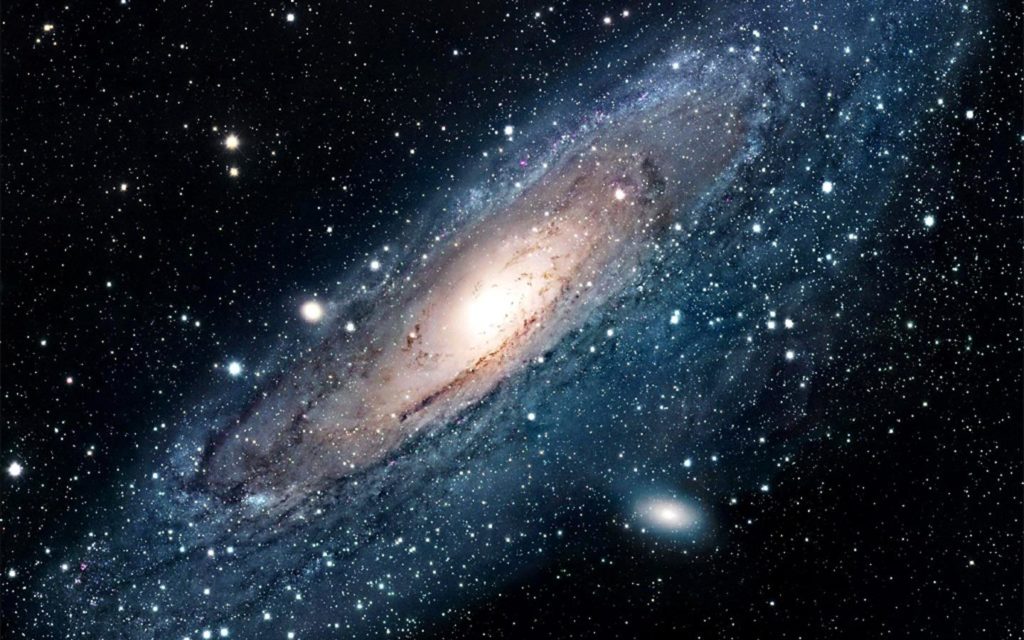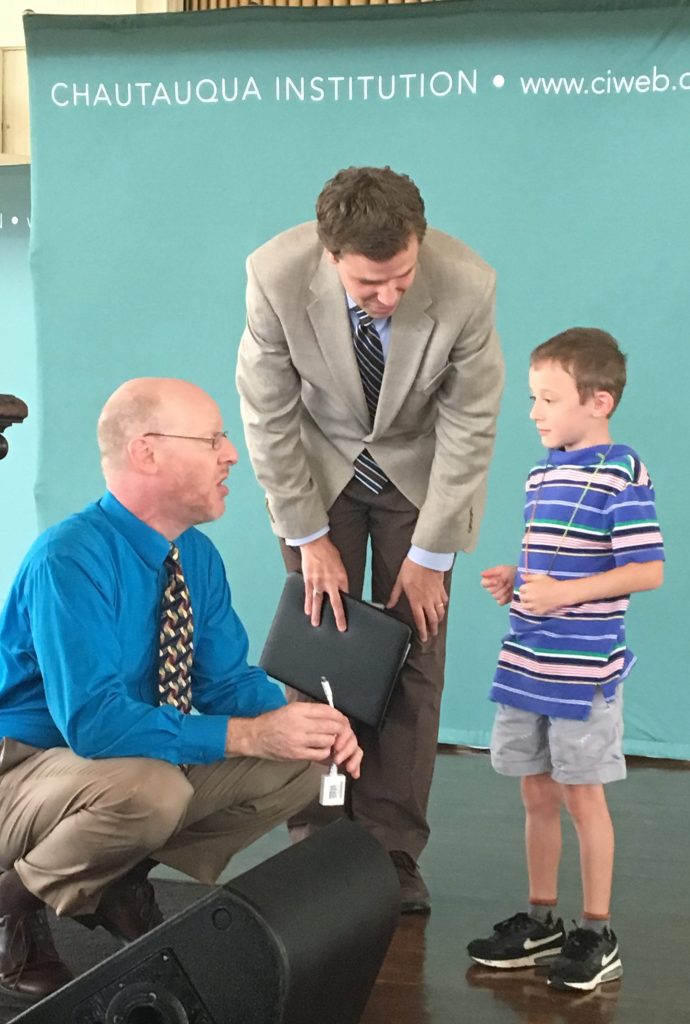Heavenly Concerns at Chautauqua

In the 1950s, my girlfriends and I liked to sleep out in our backyards and watch the stars in the inky black Texas Panhandle sky. “Are there any other people out there?” we wondered. I still wonder. During our annual visit to Chautauqua last week, Steve and I listened to experts present findings and concerns about “Our Search for Another Earth.”

Primary Concern: Is it dangerous out there? Phil Plait, who writes Slate’s “Bad Astronomy” blog (which is actually very good), led off with “Death from the Skies.” His question: Which is more likely to hit the Earth, asteroids or comets? An asteroid landed in Arizona 50,000 years ago and left a crater near the present town of Winslow. In 2013 a smaller asteroid exploded above Chelyabinsk, Russia. The blast, recorded by several dashboard cameras, was equivalent to 300,000 tons of TNT. It shattered windows, damaged more than 3,000 buildings, and injured close to 1,000 people. To help us imagine such an event, Plait suggested sci-fi movies like 2001 and Contact, but warned us that Armageddon contains really bad science. More seriously, he acquainted us with NASA’s Near Earth Object Program, which explains what asteroids and comets contain, why they are potentially hazardous, and how NASA plans to avoid them. Asteroids are more common, but virtually unpredictable. NASA hopes to track comet intruders well in advance and try to nudge them out of treacherous orbits.
Given the dire theme of the Republican Convention in Cleveland that same week, Plait’s talk made me think of Robert Frost’s poem, Fire and Ice:
Some say the world will end in fire,
Some say in ice.
From what I’ve tasted of desire
I hold with those who favor fire.
But if it had to perish twice,
I think I know enough of hate
To say that for destruction ice
Is also great
And would suffice.
Second concern: what happens when two worlds collide? Chautauqua invited Charles Mann, author of 1491: New Revelation of the Americas Before Columbus and 1493: Uncovering the New World Columbus Created, to speak about the unintended consequences of Columbus’s voyage from the Old to the New World. Before we encounter life on another earth, it’s crucial to think about what could happen. We listened with fascination to Mann as he described the diseases Columbus’s men brought with them to unsuspecting Native Americans and the ones they took back to Europe, The corn and potatoes that Columbus took home had far-reaching effects on Old World agriculture and nutrition, but it was the silver found in Peru that really shook things up. Here’s an excerpt from 1491 to tantalize you. I’m reading 1491 now; look for a future review.
Ongoing concern: how can we conceive of an inter-stellar spirituality? In Chautauqua’s interfaith morning worship services, Tony Campolo preached with passion and conviction about moral taking care of our earth and living morally, but avoided the stated theme of “inter-stellar spirituality.” Astronomer David Weintraub, in an afternoon session, titled his lecture “Profound and Staggering: Potential Impact of the Discovery of Planets Around Other Stars on Religion.” This article in the Chautauqua Daily tells more. He concluded by saying “Man may not be the reason for the Universe, but he may have a place in the Universe.” May! It was humbling to be reminded of our insignificance. I have to remember that humans are made of stardust and to stardust will return.
Third concern: Are there other planets like ours? Short answer: yes, as of 15 July 2016, there have been 3,472 exoplanets in 2,597 planetary systems and 589 multiple planetary systems identified. That’s many.more than we learned about in 2013 when the Chautauqua theme was Our Elegant Universe. Sara Seager, Professor of Astronomy at MIT, finds new exoplanets regularly and told us about a new MIT telescope, TESS, to be launched in December 2017, that will surely find more. She has written Is There Life Out There? The Search for Habitable Exoplanets, a 48-page e-book. You can read it for free here. I am thrilled that one of my former piano students, Luisa Rebull, works on the Spitzer Space Telescope team, an exciting part of Exoplanet Missions.
Fourth concern: What signs of life are there? Jill Tarter from the SETI Institute, (SETI=Search for Extra-Terrestrial Intelligence) that she founded with Carl Sagan, gave a talk much like this one.
Concluding lecture: The National Aeronautics and Space Administration sent its Chief Scientist, Dr. Ellen Stefan, and its Chief Technologist, Dr. David Miller, to inform us about Exoplanet Missions that gather data on the earth, the sun, the solar system, and the rest of the Universe. Dr. Miller illustrated the importance of NASA’s work by citing the Carrington Event in 1859, when a solar storm arced telegraph stations around the world and set some afire. One of NASA’s many objectives is to protect today’s communication systems.
NASA has some interesting apps to download for people of all ages who want to learn more: NASA’s Eyes (Earth, Solar System and Exoplanets) , DSN Now (Deep Space Network), Experience Curiosity (a WebGL from Mars), and Earth Now (climate data). I recommend Phil Plait’s highly engaging daily blog on Slate and his brisk 47-session crash course in Astronomy. Here is #1.
Leave a Reply